- Home
- Alison Weir
Queen Isabella: Treachery, Adultery, and Murder in Medieval England Page 14
Queen Isabella: Treachery, Adultery, and Murder in Medieval England Read online
Page 14
On 1 March, Isabella, returning from her pilgrimage, joined the King at Windsor.1 They left soon afterward for Westminster, where Parliament met on 18 March. But some of the barons declined to attend, furious that the King was still refusing to recognize that Gaveston’s execution amounted to lawful punishment for a felon.2 Yet Edward could count on at least one loyal supporter. Roger Mortimer was at Westminster at this time, having returned from Ireland in January and then having spent some weeks in Gascony on the King’s affairs; Mortimer would remain at Westminster for much of the year.3
Philip IV, delighted at news of the birth of his grandson, had no intention of supporting the English barons any further; from now on, his relations with his son-in-law would be far more cordial. In the spring, Isabella must have been delighted when her father sent a messenger, Louis de Clermont, to invite Edward and her to Paris for the ceremonial knighting of her brothers.4 Her uncle of Evreux and the other French envoys were still in England, and on 1 May, Isabella entertained them to dinner at Westminster.5 Thereafter, she was busy with preparations for the coming journey.6 But many of the barons were concerned that the King had decided to leave England at such a critical juncture, what with the Scottish raids and the issues with Lancaster still unresolved.7 Mindful of these criticisms, Edward protested that both the Pope and King Philip were insisting he make the trip, since there were pressing Gascon affairs to be dealt with.8
On 11 May, the magnates’ party was weakened by the death of that “passionate”9 and inflexible adversary of the King, Archbishop Winchelsey; during Edward’s absence abroad, the Chapter of Canterbury was due to hold an election to decide his replacement. The King wanted a new Primate who would be more loyal to himself, and far more accommodating, than Winchelsey had been.
Edward and Isabella sailed from Dover to France on 23 May with a splendidly appointed retinue of 220 persons, leaving Gloucester as Keeper of the Realm.10 Edward had spent nearly £1,000 on his clothes and jewels, and doubtless Isabella was royally garbed, too. The royal couple first traveled south to Gascony, being “received with very great honour as they passed through the country,”11 and then returned north to Paris, arriving there by 1 June.12 They lodged at Saint-Germain-des-Prés, to the west of the city.13
Two days later, on Pentecost Sunday, in a magnificent ceremony, Isabella’s three brothers, Louis, Philip, and Charles, along with many other young noblemen, were knighted by King Philip. The event was marked by weeks of pageants and feasts, with the two Kings and Evreux acting as hosts; Edward’s wine bill for the whole visit came to £4,468 19s. 4d. For the English King’s delight, a morality play was staged, entitled The Glory of the Blessed and the Torments of the Damned.14 Edward was particularly impressed with the skills of Philip’s minstrel, Hurel, and rewarded him with 40s. (£2.00).
The visit provided the two Kings with an opportunity to discuss business, and Edward found Philip most accommodating over Gascony15 and also openhanded when it came to lending money.16 The fact that Isabella was now the mother of the heir to England and no longer had any rival had something to do with this, but Philip was also keen to underline the diplomatic and dynastic importance of his daughter’s marriage: She was mentioned in every document detailing her father’s concessions to her husband.17 During this visit, Philip gave Isabella many gifts.18 Edward, too, was lavish in his giving—his present bill came to £3,016 13s. 8d.
On 6 June, both monarchs declared publicly their intentions of going on a crusade to free the Holy Land from the Turks; in token of their vows, they solemnly took the Cross from Cardinal Nicholas of Saint Eusebius, the papal legate.19 Carried away by a sudden enthusiasm for the venture, Edward used his persuasions on Isabella, who, on 13 June, herself took the Cross at Pontoise, whither Philip had conducted her and Edward three days earlier. It appears, however, that Isabella was not particularly enthusiastic about fulfilling her vow, and neither was her sister-in-law, Jeanne of Burgundy, who had taken the Cross with her at her husband Philip’s insistence. Isabella had sworn to go on crusade only on condition that she do so in company with her husband, who she probably realized would never make the effort, and that she be not required to donate any more money to the crusade than “her own devotion” obliged her to offer.20
While Edward and Isabella were staying at Pontoise, their silken pavilion and all their possessions were destroyed in a fire, and they barely managed to escape with their lives, after fleeing in their nightclothes.21 This must have been a terrifying experience, and Isabella suffered burns to her hand and arm that took a long time to heal.
On 2 July, Philip accompanied the King and Queen to Poissy, a seat of monarchs since the fifth century, with a twelfth-century church in which Saint Louis had been baptized. Edward and Isabella may have lodged in the eleventh-century royal abbey to the west of the town. After saying farewell to Philip on 5 July, the King and Queen traveled toward Wissant via Maubisson, Beauvais, and Boulogne. They docked at Dover on 15 July,22 then rode to Westminster.
According to two chroniclers, soon after she returned home, Isabella became troubled about the conduct of her sisters-in-law, Marguerite, Blanche, and Jeanne of Burgundy. At least four chroniclers23 assert that, during her visit to France, Isabella attended a satirical puppet show given by her brothers Louis and Charles, and that she afterward gave silk purses that she had herself embroidered to her sisters-in-law as gifts. In July, to celebrate their return home, the King and Queen gave a feast at Westminster, which was attended by some knights of the French court who had accompanied the royal couple back to England. Two of the knights were Norman brothers, Philip and Gautier d’Aulnay, and Isabella was disconcerted to see hanging from their belts the purses she had given to Marguerite and Blanche. The chroniclers state that she confided her concerns to her father,24 but she cannot have done so immediately, since nothing was done about the matter until the following May. Probably she kept her suspicions to herself until further proof was forthcoming. After all, the purses could have been given as knightly favors, a practice that was entirely acceptable in courts that took the game of courtly love seriously. And the knights were wearing these favors openly.
Much had happened during the King’s absence. The monks at Canterbury had elected the well-qualified Thomas Cobham as Archbishop, but Edward had decided to push for the appointment of his friend Walter Reynolds and promptly appealed to the Pope to annul the election. And Parliament had assembled at Westminster on 8 July, expecting the King to have returned; by the time he had reached England, the impatient and exasperated barons had dispersed.25
Meanwhile, while Edward had been squabbling with his barons in England and going on a pleasure jaunt to France, Robert Bruce had been scoring success after success in Scotland:26 by the summer, Stirling was the only important Scottish castle left in English hands, and Bruce’s men had been laying siege to it since October 1312.27 Fearing that his sovereign would not trouble himself to come to Stirling’s defense, the castle’s governor reached an agreement with Bruce’s brother, Edward, that if the English had not relieved Stirling by 24 June 1314, he would surrender the castle to the Scots.
There was, of course, no guarantee that Edward would go to Stirling’s aid—he was more concerned with triumphing over the earls—and there were many to murmur at the King’s continuing failure to counteract the advances made by Bruce and put a stop to the savage raids that were terrorizing the North. “Our King has now reigned six full years, and has till now achieved nothing praiseworthy,” observed one chronicler succinctly, “except that he has married royally and has thereby raised up for himself a handsome son and heir to the throne.”28
Isabella left Westminster on 26 July and went via Henley and Wallingford to Bisham, where her baby son was staying, probably in the thirteenth-century preceptory of the Knights Templar, which had now reverted to the Crown. She remained there until 17 August, when she moved to the Benedictine abbey at Chertsey, renowned for extending hospitality to itinerant royalty. While there, she wrote a most affect
ionate letter to Edward about her affairs in Ponthieu, which is reproduced in full here since it gives some interesting insights into her relations with her husband:
My very dear and dread Lord, I commend myself to you as humbly as I can. My dear Lord, you have heard how our seneschal and our controller of Ponthieu have come from Ponthieu concerning our affairs; the letters they had to bring can remain in the state they are at present until the Parliament,29 except one which will concern your inheritance in Ponthieu and the Count of Dreux, which should be acted upon immediately in order to keep and maintain your inheritance. I beg you, my gentle Lord, that by this message it may please you to request your chancellor by letter that he summon those of your council to him and take steps speedily in this matter, according to what he and your said council see what is best to do for your honour and profit. For if action is not speedily taken, this will do you great harm, and be of much benefit to the said Count, your enemy, as I have truly heard by my council. May the Holy Spirit keep you, my very dear and dread Lord.
Given at Chertsey, 11 August.30
This letter shows that the Queen had her finger on the pulse of affairs, was able to prioritize matters of urgency, and could use her political judgment shrewdly and to her husband’s advantage. There is also a suggestion that she was rather bossy and dictatorial, and accustomed privately to giving Edward advice for his “honour and profit”; it appears, too, that he had come to rely on it. Furthermore, we may deduce that Isabella was far more quick-witted than he, and a stronger and more forceful character, as events would indeed prove.
The Queen stayed at Chertsey for some weeks before returning to London in September.31 Even then, the King and the barons had still not reached a lasting concord, and on 28 August, Edward had asked Philip IV to send Evreux back to England to act as a mediator.32 In September, the earls met in London and appealed to the King to remit his rancor toward them. “He did not immediately yield, but dragged out the business as usual.”33 During the Parliament that met on 23 September and sat until 15 November, Evreux, Gloucester, and representatives of the Pope all did their best to forge a peace.
In October, news came from Avignon that Thomas Cobham’s election had been quashed and that the Pope had appointed the King’s own candidate, Walter Reynolds, as Archbishop of Canterbury. The chroniclers of the day were in little doubt that the sin of simony had been committed—“my lady Money transacts all business in the curia!”—and sneered at the new Archbishop for being “a mere clerk and scarcely literate,”34 which may be an exaggeration, but however his preferment had been achieved, Edward now had what he wanted, an ally in Canterbury, which considerably strengthened his support.
On 13 October, perhaps at the instance of Evreux or Gloucester, Isabella herself became a mediator between her husband and his barons, urging the latter publicly to crave the King’s forgiveness for Gaveston’s murder. “The Queen anxiously interceded, striving to calm the feelings of both parties and strenuously attempting to make peace.”35 It was this, as well as the prayers of Cardinal Arnaud and Evreux,36 that finally helped to bring about an agreement. The next day, Isabella was present at a formal ceremony of reconciliation in Westminster Hall, in which Lancaster, Warwick, and Hereford knelt before Edward in submission; then he gave them the kiss of peace and told them that their pardons, and those of five hundred of their supporters, had been granted “through the prayers of his dearest companion, Isabella, Queen of England.” On 15 October, the King confirmed the pardons by his Letters Patent, and soon afterward he rescinded the Ordinance censuring the Beaumonts. The reconciliation was marked by two banquets, one given by Edward, the other by Lancaster,37 but this display of amity was little more than a veneer. Behind the masks of courtesy, the two men were still determined to destroy each other.
At this time, Isabella was suffering from “an infirmity of the hand and arm,”38 probably caused by burns sustained during the fire at Pontoise, which may have become infected. While staying at Westminster, she was attended by two English physicians, as well as two French ones sent by her father. On their instructions, her apothecary, Peter of Montpellier, made up some herbal plasters and a lotion of rose water and olive oil, which he mixed on a lead plate; during November and December, her second apothecary, Master Odinet, treated the Queen with ointments, more plasters, and enemas.39
Isabella’s illness must have incapacitated her for a time. The King, doubtless impressed with her diplomatic and successful intervention in his negotiations with the magnates, had intended to send her to the Paris Parlement on 19 November to put forward his case in a dispute over Gascony,40 but her injuries were so painful that she was unable to travel and her visit had to be postponed. Her sufferings were such that on 18 November, she sent an offering to the shrine of Saint Thomas at Canterbury; she had meant to go in person on her way to France but had had to postpone it because of her infirmity. The fact that Isabella was to be treated for her injuries for at least the next two years suggests that they were quite serious.41
She did, however, send a letter interceding with her father on behalf of her husband’s nephew, Edward, Count of Bar, who had been wrongfully imprisoned by the Duke of Lorraine, one of Philip’s vassals; the Count was released the following June.42 The Queen also wrote to King Philip and many other French lords on 8 December;43 these letters may well have been connected to the short trip that Edward himself made to France on 12 December, which purported to be a pilgrimage but was doubtless to discuss difficulties over Gascony with Philip.44 Nothing much is known about this meeting, which took place at Montreuil, but matters were probably not resolved when the King returned to England on the twentieth. He and the Queen spent Christmas at Westminster, then went to Eltham for the New Year.45
Late in 1313, the King had belatedly resolved to mount a military campaign to relieve Stirling, and in January 1314, he began assembling a mighty army. He was in a strong position now, and a victory in Scotland would go further than anything to cement his peace with the barons; when he returned home in triumph, they would be able to gainsay him nothing.
Isabella’s hand was now presumably better, because in the middle of January, she resumed her preparations for a visit to France and sent William de Boudon to the council in London to ask for money to defray her expenses. At the council’s request, the King’s banker, Antonio di Pessagno, paid to the Queen £3,995 plus £948 13s. to defray her traveling costs.46 The King’s councillors, aware of her influence with her father, and impressed by her efforts at peacemaking, had themselves urged Edward to send her at this time to present his case at the imminent Paris Parlement, in the hope that King Philip would be unable to resist the pleas of his beloved daughter. Ostensibly, the reason for Isabella’s journey would be her desire to undertake a private pilgrimage to the shrines at Boulogne, Amiens, Chartres, “and other places in France.”47 Nevertheless, she would go in great state, as the Queen and official emissary she was.
In February, the Earl of Surrey was forced to surrender the High Peak to the Queen, and from March onward, Edward arranged for Isabella to be endowed with a greater permanent source of income, since her future dower was still in Queen Marguerite’s hands; in order to do this, he borrowed heavily from Genoese bankers, who virtually supported Isabella’s household for an entire year.
Before she went to France, Isabella accompanied the King to the enthronement of Archbishop Reynolds in Canterbury Cathedral. They left Eltham on 10 February48 and arrived in Canterbury on the fifteenth;49 the impressive ceremony took place two days later.50 The royal couple had returned to London by 23 February,51 where, on the twenty-sixth, the King commissioned Gloucester, Henry de Beaumont, William Inge, and Bartholemew de Badlesmere, a Kentish baron, to accompany the Queen to France and help safeguard his French interests.52 Since January, Isabella had been receiving briefings from William Inge and from one Thomas de Cambridge, who were both very knowledgeable about Gascon affairs.53
Isabella and her advisers immediately traveled down to Sandwich, whe
re they boarded a magnificent vessel under the command of William de Montacute; it had been hired by Antonio di Pessagno, along with twenty-six other ships and thirteen barges for the Queen’s household.54 The flotilla sailed for France on 28 February and landed at Wissant on 1 March.55 Isabella de Vesci, Eleanor le Despenser, and the Countess of Surrey were among Isabella’s entourage. She also took with her a team of fifteen greyhounds, intending to enjoy some hunting during her visit; a man was paid to look after them on the journey.56
As soon as she landed, Isabella dispatched a messenger to Edward with a letter from her informing him of her safe arrival.57 Journeying through her county of Ponthieu, she came first to Boulogne, where on 3 March she prayed at the shrine of Our Lady in the cathedral where she had been married. The next day saw her at Montreuil, and the day after that at the village of Crécy-en-Ponthieu. On 6 March, she reached Saint Riquier, where she made her devotions in the beautiful abbey church of the Benedictines, which dated from the seventh century, and on the seventh and eighth, she stayed at Amiens, on the banks of the Somme, where she made an offering at the shrine of Saint Firmin in the city’s great cathedral. Traveling southward, Isabella reached Poix-de-Picardie on 9 March, before proceeding through Normandy and visiting Gerberoy, Neufmarché, Gisors, Chars, and Pontoise.58
The Queen entered Paris on 16 March and took up residence at Saint-Germain-des-Prés, where she had stayed with Edward the previous year. As soon as she arrived, she visited the nearby Benedictine abbey and made an offering; during her stay in Paris, she made her devotions in several churches and sent offerings to other holy places, notably the shrines of Saint James at Compostela in Spain and Saint Brieuc in Brittany.59
On the night before Isabella arrived in Paris, King Philip and his court had witnessed the burning of her godfather, Jacques de Molay, last Grand Master of the Knights Templar, and his associate, Geoffrey de Charnay. The executions took place on the Île de la Seine in Paris. As Molay was slowly consumed in the fire, he famously cursed King Philip and his descendants to the thirteenth generation and summoned him and Pope Clement to meet him at God’s tribunal before the year was out.60 This chilling event must have overshadowed Isabella’s reunion with her father.

 Richard III and the Princes in the Tower
Richard III and the Princes in the Tower Britain's Royal Families: The Complete Genealogy
Britain's Royal Families: The Complete Genealogy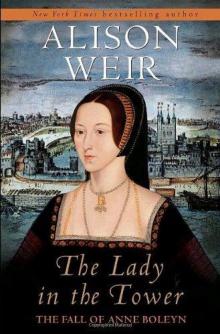 The Lady in the Tower: The Fall of Anne Boleyn
The Lady in the Tower: The Fall of Anne Boleyn Six Wives of Henry VIII
Six Wives of Henry VIII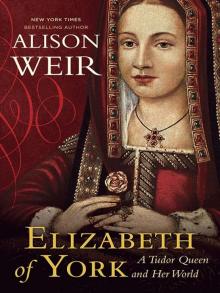 Elizabeth of York: A Tudor Queen and Her World
Elizabeth of York: A Tudor Queen and Her World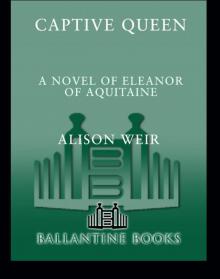 Captive Queen
Captive Queen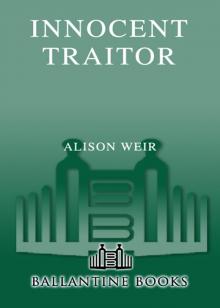 Innocent Traitor
Innocent Traitor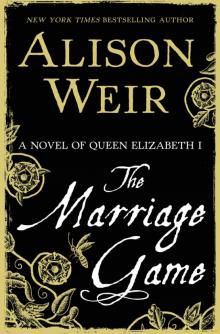 The Marriage Game
The Marriage Game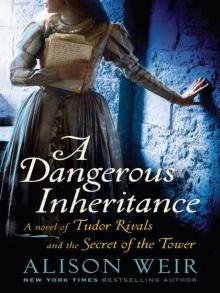 A Dangerous Inheritance
A Dangerous Inheritance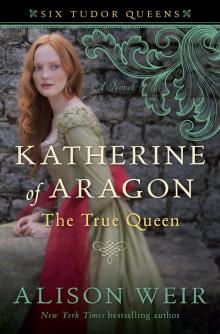 Katherine of Aragón: The True Queen
Katherine of Aragón: The True Queen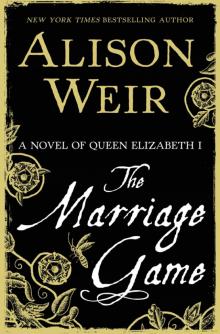 The Marriage Game: A Novel of Queen Elizabeth I
The Marriage Game: A Novel of Queen Elizabeth I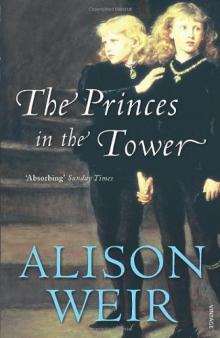 Princes in the Tower
Princes in the Tower Anne Boleyn: A King's Obsession
Anne Boleyn: A King's Obsession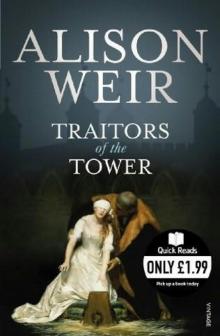 Traitors of the Tower
Traitors of the Tower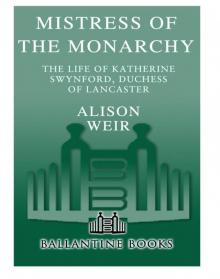 Mistress of the Monarchy: The Life of Katherine Swynford, Duchess of Lancaster
Mistress of the Monarchy: The Life of Katherine Swynford, Duchess of Lancaster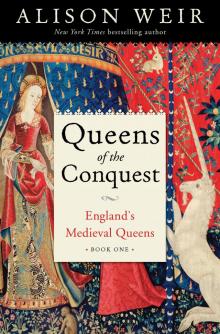 Queens of the Conquest: England’s Medieval Queens
Queens of the Conquest: England’s Medieval Queens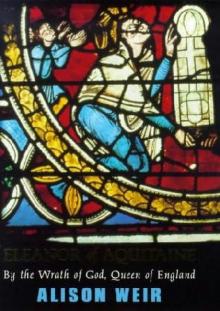 Eleanor of Aquitaine: A Life
Eleanor of Aquitaine: A Life Mary, Queen of Scots, and the Murder of Lord Darnley
Mary, Queen of Scots, and the Murder of Lord Darnley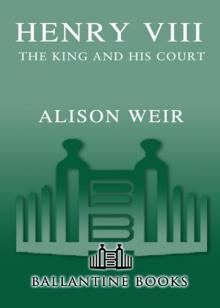 Henry VIII: The King and His Court
Henry VIII: The King and His Court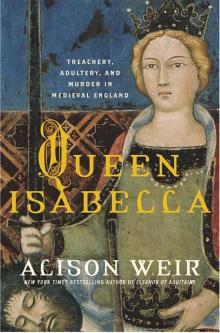 Queen Isabella: Treachery, Adultery, and Murder in Medieval England
Queen Isabella: Treachery, Adultery, and Murder in Medieval England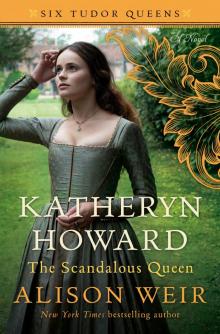 Katheryn Howard, the Scandalous Queen
Katheryn Howard, the Scandalous Queen Arthur- Prince of the Roses
Arthur- Prince of the Roses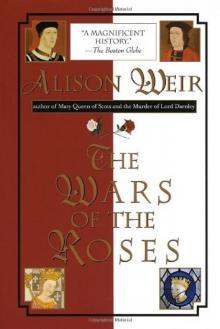 The Wars of the Roses
The Wars of the Roses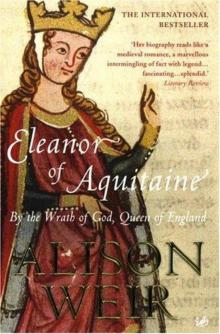 Eleanor of Aquitaine: By the Wrath of God, Queen of England
Eleanor of Aquitaine: By the Wrath of God, Queen of England Mary Boleyn: The Great and Infamous Whore
Mary Boleyn: The Great and Infamous Whore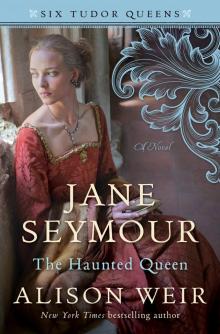 Jane Seymour: The Haunted Queen
Jane Seymour: The Haunted Queen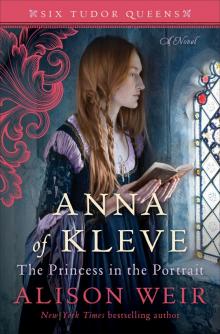 Anna of Kleve, the Princess in the Portrait
Anna of Kleve, the Princess in the Portrait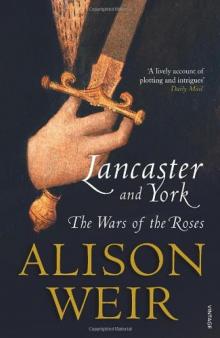 Lancaster and York: The Wars of the Roses
Lancaster and York: The Wars of the Roses The Grandmother's Tale
The Grandmother's Tale The Princess of Scotland (Six Tudor Queens #5.5)
The Princess of Scotland (Six Tudor Queens #5.5)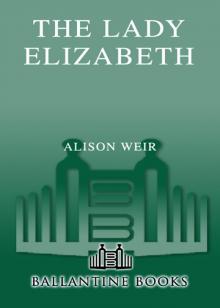 The Lady Elizabeth
The Lady Elizabeth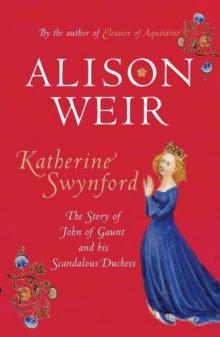 Katherine Swynford: The Story of John of Gaunt and His Scandalous Duchess
Katherine Swynford: The Story of John of Gaunt and His Scandalous Duchess The Curse of the Hungerfords
The Curse of the Hungerfords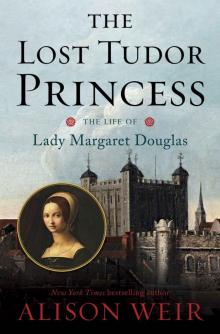 The Lost Tudor Princess: The Life of Lady Margaret Douglas
The Lost Tudor Princess: The Life of Lady Margaret Douglas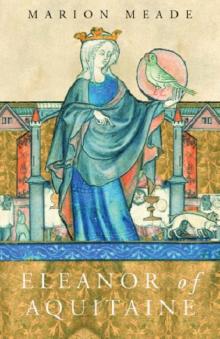 Eleanor of Aquitaine
Eleanor of Aquitaine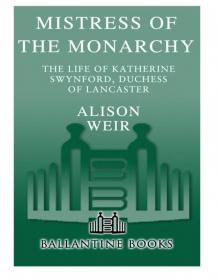 Mistress of the Monarchy
Mistress of the Monarchy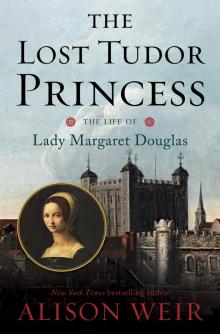 The Lost Tudor Princess
The Lost Tudor Princess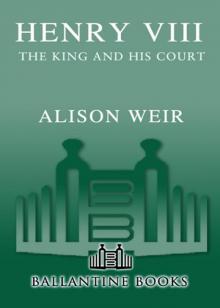 Henry VIII
Henry VIII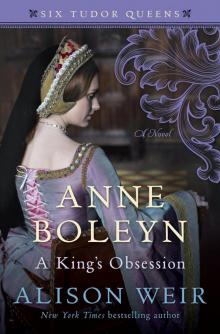 Anne Boleyn, a King's Obsession
Anne Boleyn, a King's Obsession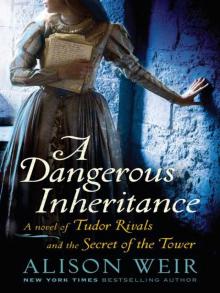 A Dangerous Inheritance: A Novel of Tudor Rivals and the Secret of the Tower
A Dangerous Inheritance: A Novel of Tudor Rivals and the Secret of the Tower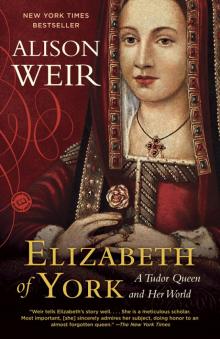 Elizabeth of York
Elizabeth of York Katherine of Aragon, the True Queen
Katherine of Aragon, the True Queen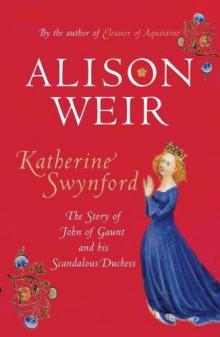 Katherine Swynford
Katherine Swynford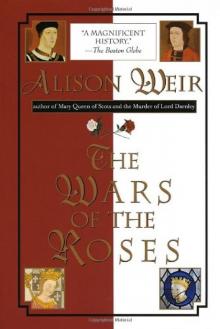 Wars of the Roses
Wars of the Roses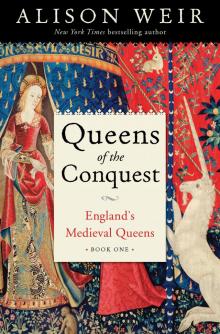 Queens of the Conquest
Queens of the Conquest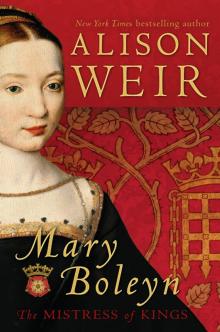 Mary Boleyn
Mary Boleyn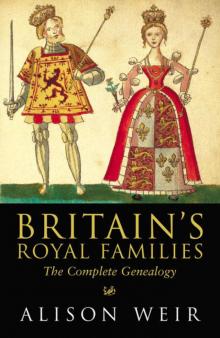 Britain's Royal Families
Britain's Royal Families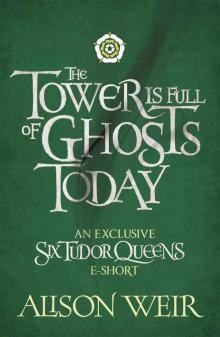 The Tower Is Full of Ghosts Today
The Tower Is Full of Ghosts Today Life of Elizabeth I
Life of Elizabeth I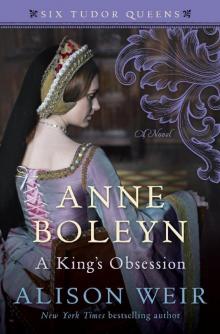 Anne Boleyn A King's Obssession
Anne Boleyn A King's Obssession Lancaster and York
Lancaster and York Jane Seymour, the Haunted Queen
Jane Seymour, the Haunted Queen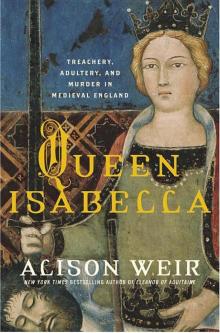 Queen Isabella
Queen Isabella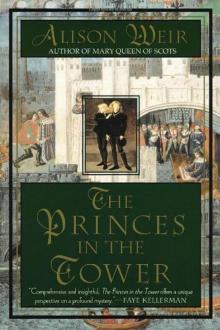 The princes in the tower
The princes in the tower